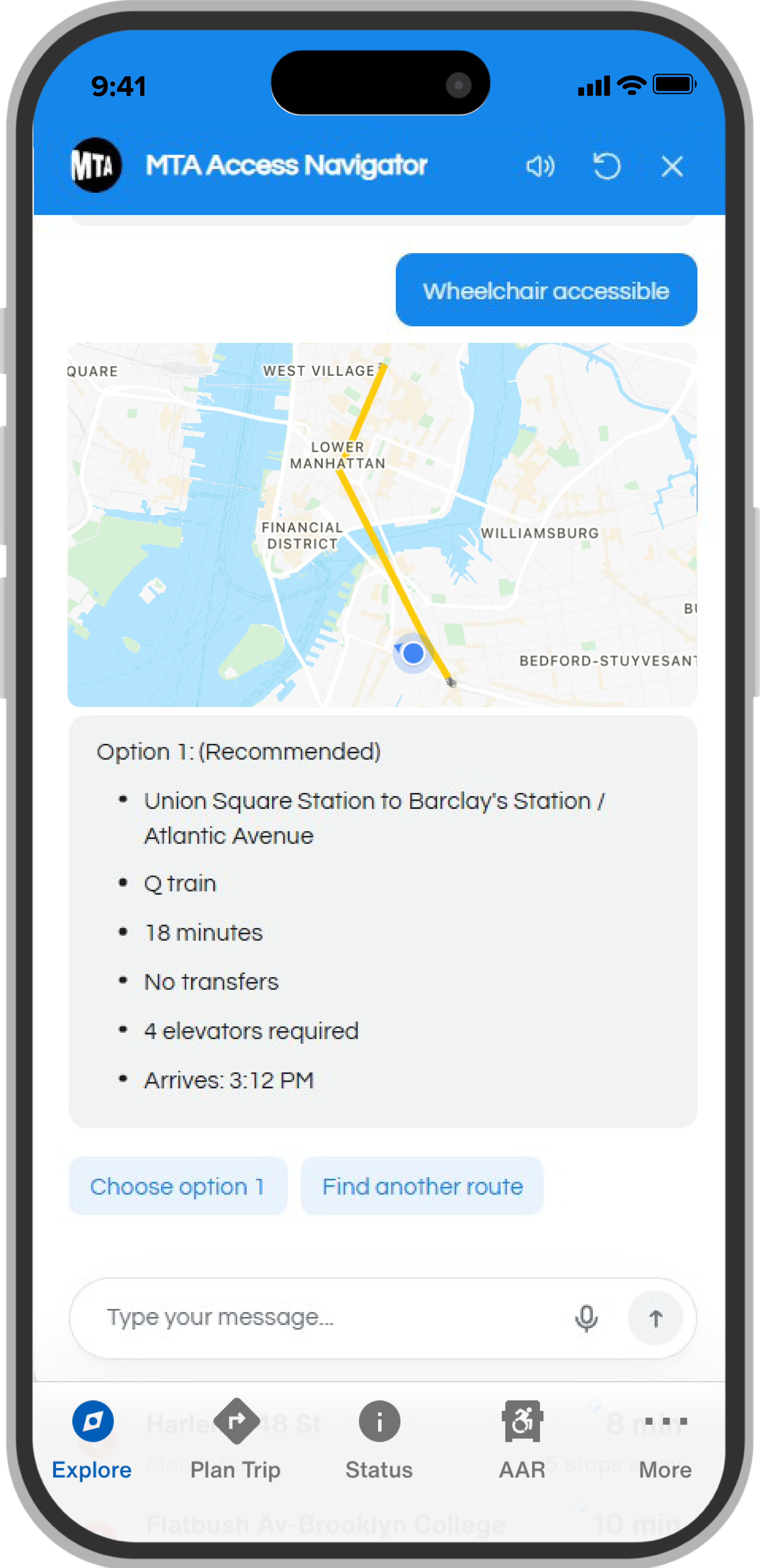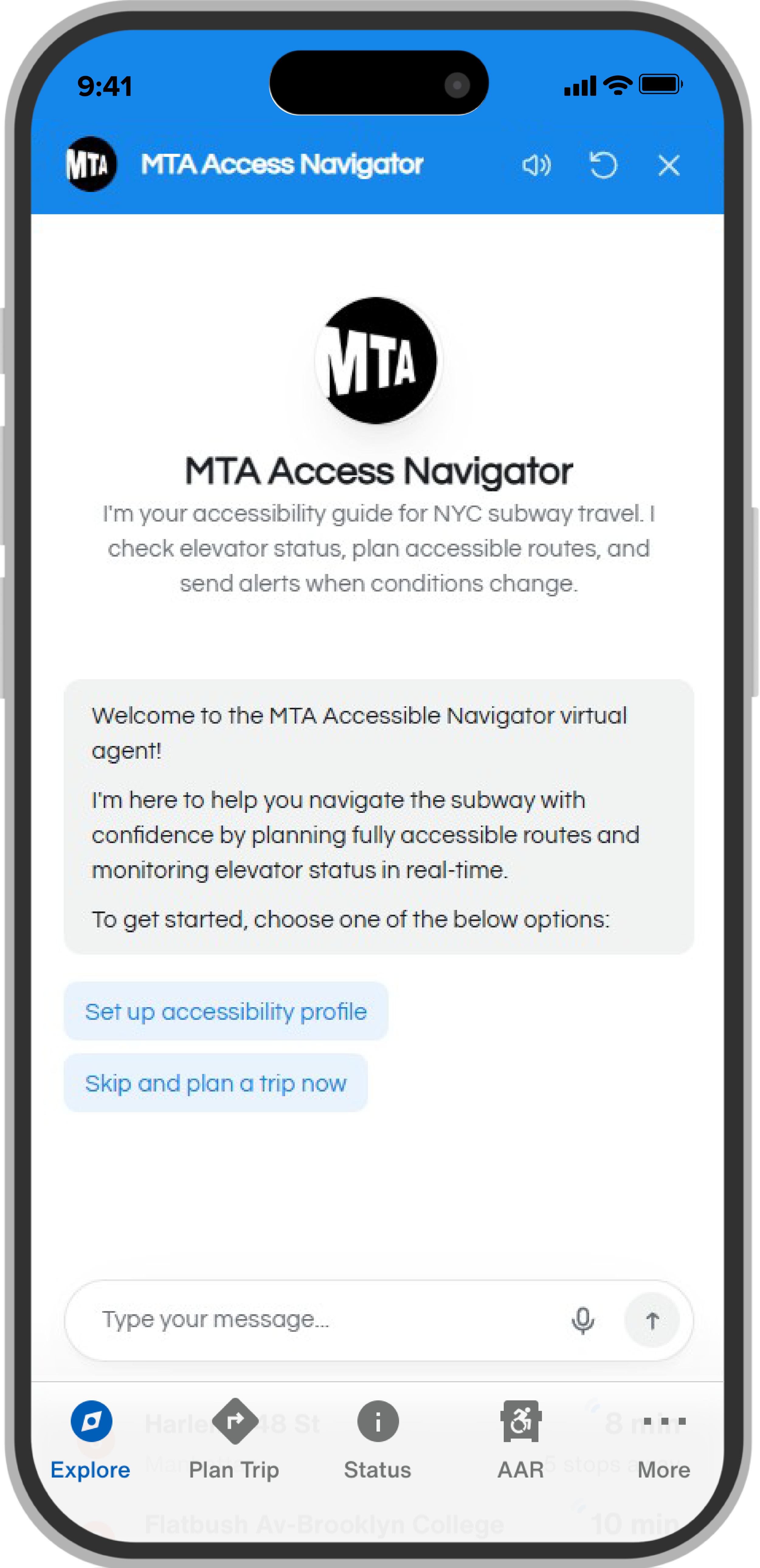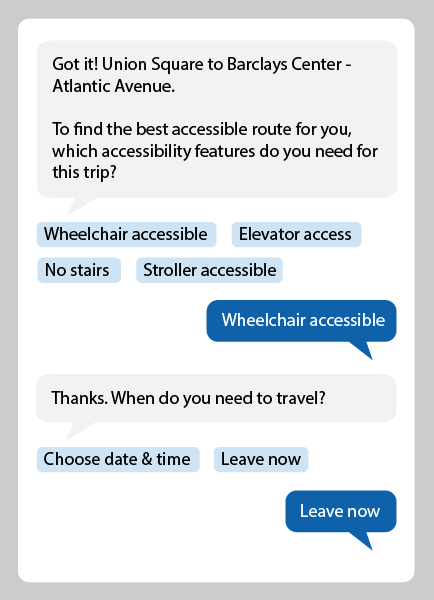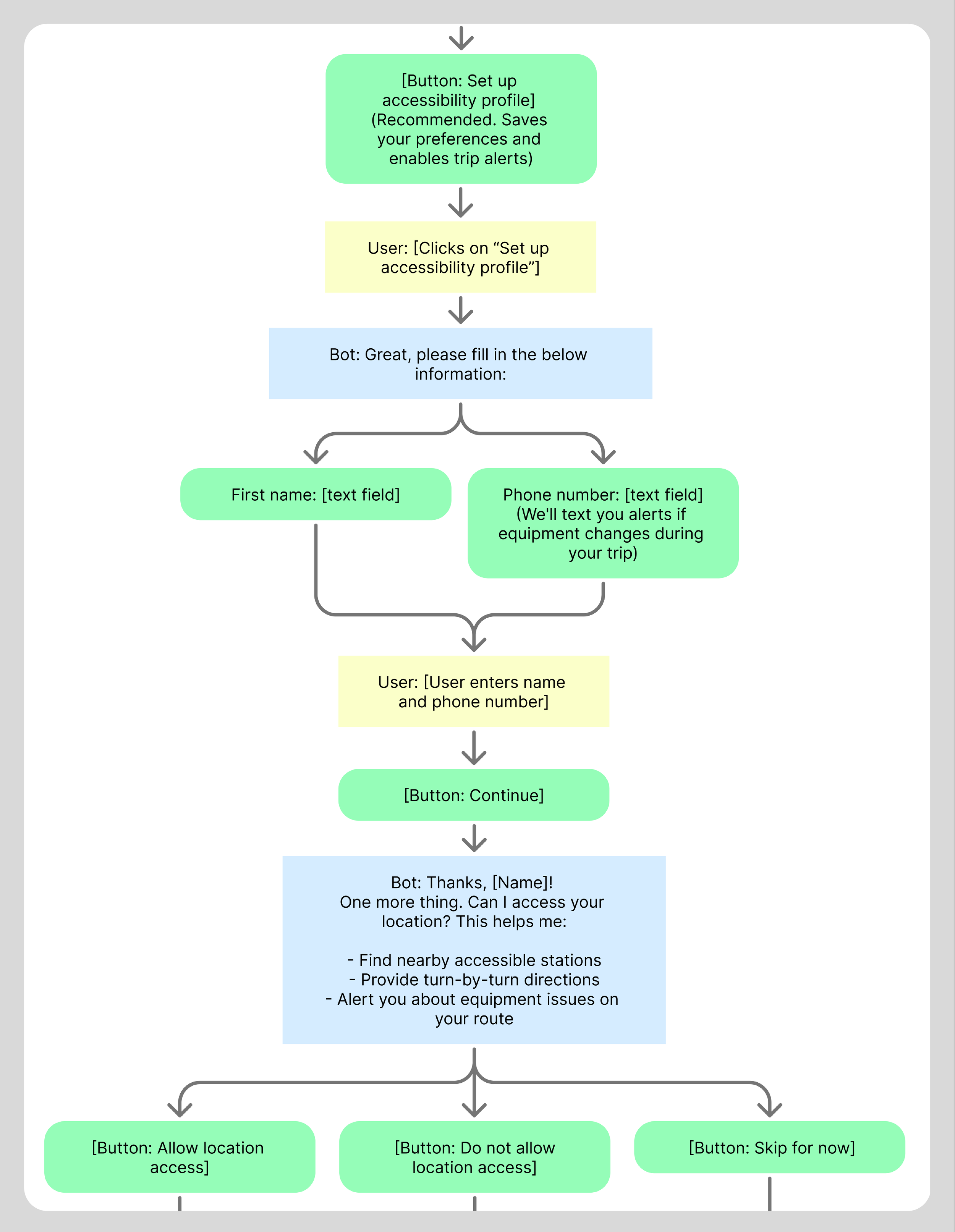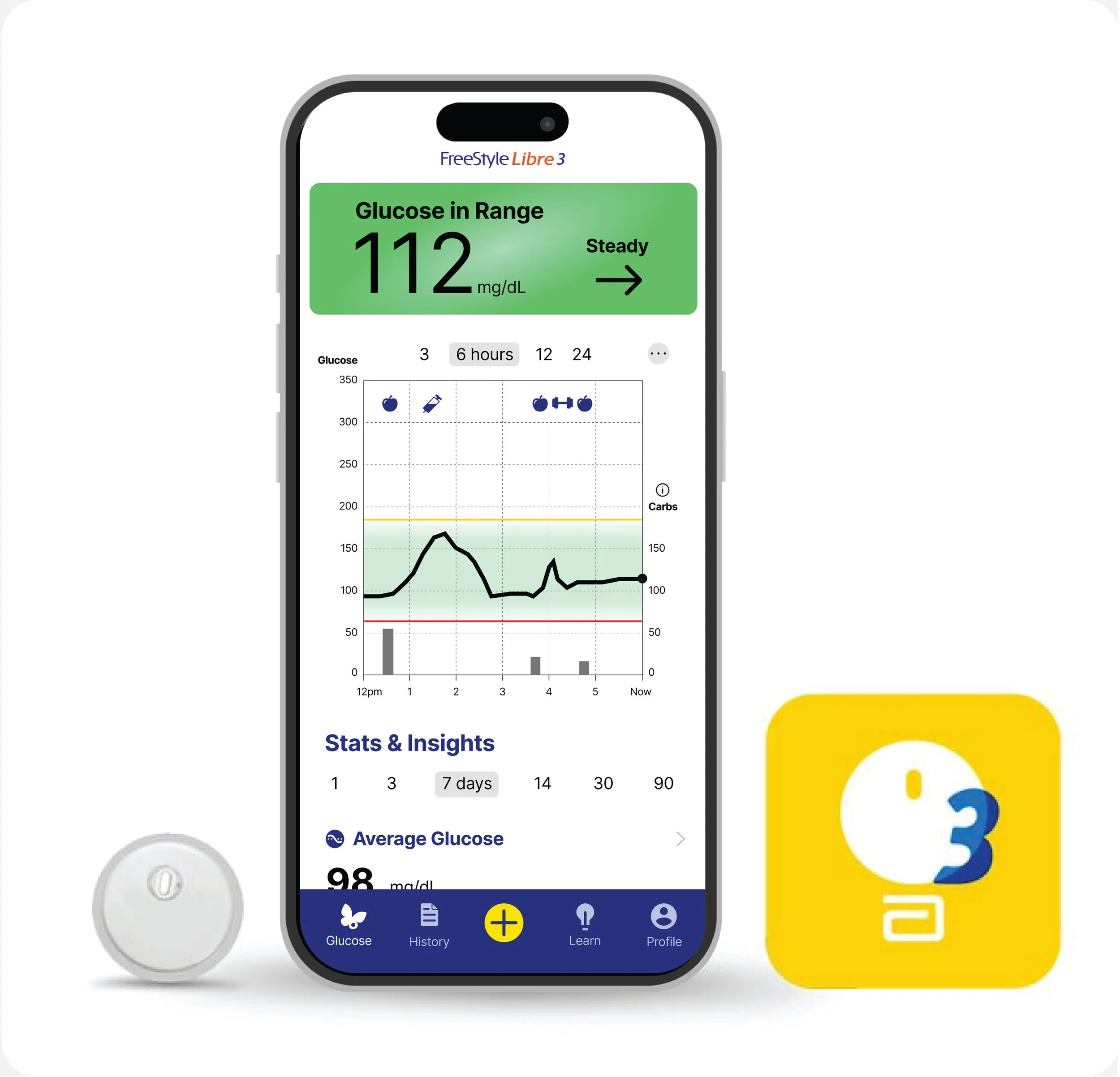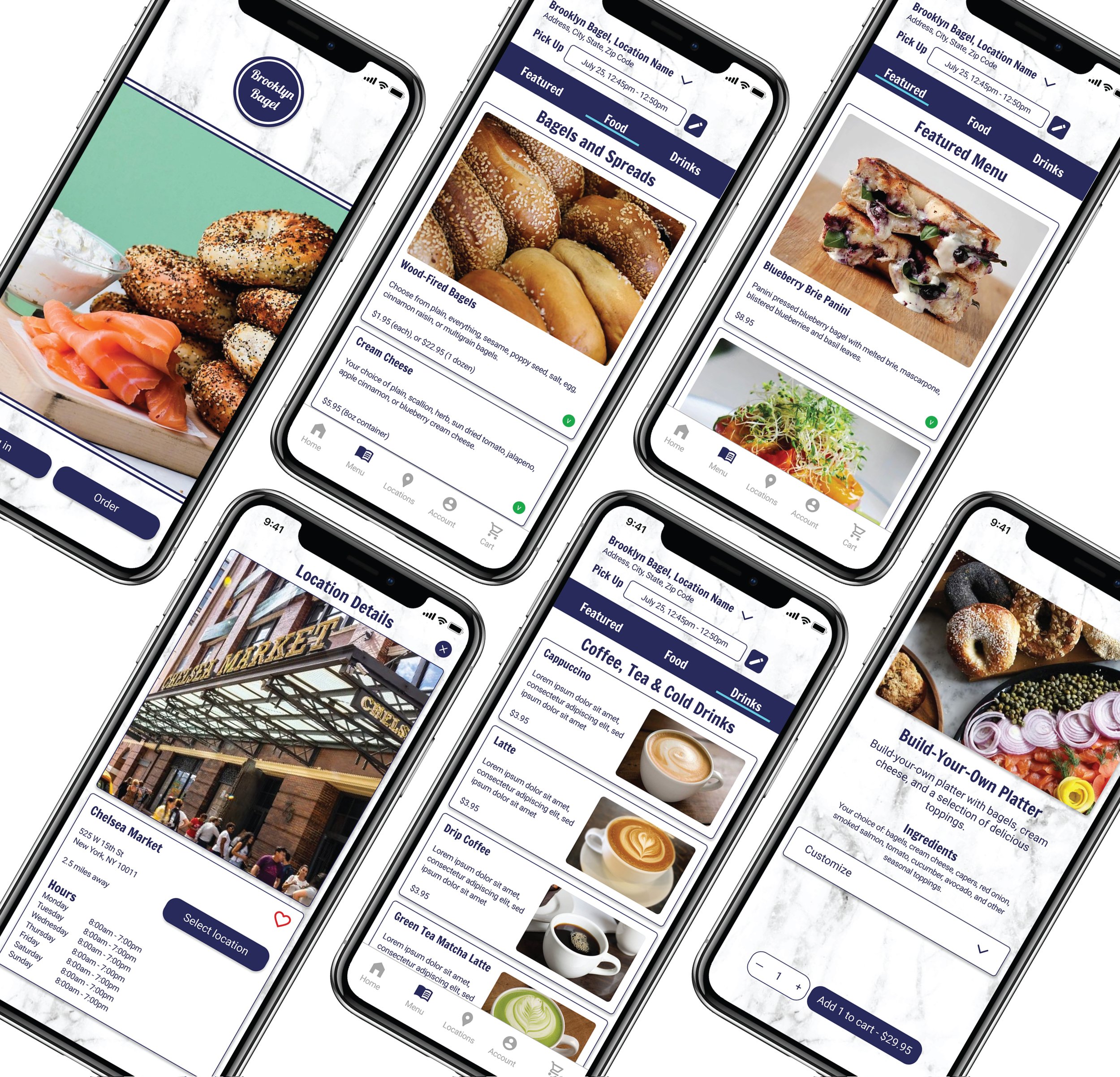
MTA Access Navigator
An AI assistant to help passengers with mobility needs find accessible routes through the NYC subway system
Solo Project
Role: Conversational UX Designer
Duration: 2 weeks
Tools: Voiceflow, Figma
01. Project Overview
Summary
A smart AI assistant for accessible transit routing integrated into the official MTA mobile app. The chatbot helps passengers with mobility needs navigate the subway system, guiding them along accessible paths with working elevators, escalators, and appropriate accommodations.
Why a Chatbot?
A conversational interface was the ideal solution for this accessibility challenge. Transit navigation is naturally conversational, and a chatbot makes route planning fast and efficient.
It provides capabilities that existing MTA tools lack: real-time alerts when elevators fail, guaranteed accessible route planning, and quick issue reporting through brief, natural exchanges that fit seamlessly into the travel experience.
02. The Challenge
-
🧩 The Problem
MTA passengers with mobility needs cannot navigate the subway confidently because accessibility equipment is unreliable and alternative routes complicated to plan when problems occur. This uncertainty forces many users to avoid public transit entirely, limiting their independence and quality of life.
-
❓ How Might We...
…Provide real-time, reliable information about elevator and escalator status that passengers can trust?
…Make it effortless to find alternative accessible routes when equipment fails?
…Instantly reroute passengers when accessibility equipment fails mid-journey without causing stress?
-
💡 The Solution
If we create an AI chatbot assistant that provides quick accessible route planning, real-time accessibility equipment status, and instantly suggests alternative accessible routes when problems occur, then passengers with mobility needs will navigate the subway confidently and independently. This will result in increased ridership, fewer abandoned trips, and improved quality of life.
03. User Persona
Who Will Benefit
Wheelchair users and people with mobility needs.
Elderly passengers who cannot use the stairs safely.
Caregivers with strollers.
People with temporary injuries (crutches, etc.).
Travelers with heavy luggage or large items they’re carrying.
04. Bot Anatomy
-
📋Overview
AI assistant embedded in the MTA mobile app that enables confident, independent subway travel through accessible route planning and real-time equipment monitoring.
-
💬Dual-Mode Chat Interface
Text-based chat (default)
Voice-based option
Push notifications for real-time updates
-
➡️Input
Text-based chat (default)
Voice-based option
-
⬅️Output
Text responses
Appropriate visuals (maps, etc.) (future iteration)
Voice output (optional)
Push notifications for real-time accessibility updates and changes
Bot Features
Onboarding & Profile: Accessibility profile setup with personalized preferences.
Live Status: Real-time elevator and escalator status checks.
Issue Reporting: Quick way to report broken equipment
Accessible Route Planning: Only suggests routes meeting user's accessibility needs.
Text Alerts: Push notifications when equipment fails during travel.
Bot Personality
05. Scripts & Flow
Sample Scripts
I wrote multiple sample scripts to explore different conversational scenarios including:
The onboarding accessibility questionnaire for new users.
Planning an accessible route for a rider with a wheelchair.
A rider asking for the status of an elevator at a specific station.
A rider reporting an accessibility issue at a station.
A rider receiving a text alert about an elevator going out of service during their journey.
Flow Chart: Onboarding
Based on the scripts, I created a flow chart for multiple paths. The flow shown here details the accessibility profile onboarding.
The welcome message sets the conversational tone and bot personality as professional yet approachable, expert, confident, reassuring, clear and direct.
Accessibility Profile Set-Up
For users who choose to save an accessibility profile, they enter their first name and phone number, then choose to allow location sharing or not.
Accessibility Preferences
Next the bot collects the user’s accessibility preferences. These preferences are saved and used for route planning.
The profile can be updated at any time with revised accessibility needs.
06. Prototyping
Voiceflow
Using Voiceflow, I built an interactive bot prototype that demonstrates the core user journey from onboarding through route planning. The prototype handles multiple conversation paths, including profile setup, accessibility preferences, real-time elevator status checks, and route selection. I designed the conversational flow to feel natural and supportive, with the bot offering clear options through buttons while still accepting typed or voice input. The prototype validates how effectively the bot can guide users through complex accessibility decisions while maintaining a helpful, non-authoritative tone that empowers users to make their own choices.
07. Next Steps
Future Iteration
The goal of this project was to make it easier and more efficient for users with mobility needs to navigate the NYC subway system. The prototype demonstrates how useful an accessibility bot can be for users, and there is great potential to increase the bot’s capabilities and features to address other accessibility needs of MTA riders.
Additional user testing with target users.
Add a VUI option to address the needs of users with vision needs.
Continue to train the bot to handle additional scenarios and errors.
